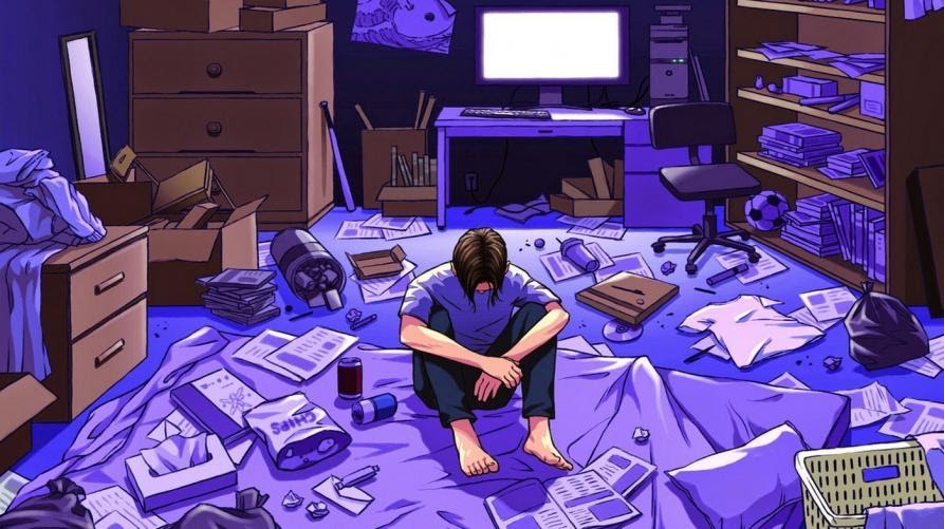When a friend showed me his new song a couple of years ago, I couldn’t stop wondering about the strange title; “Hikikomori”. If I had listened to the first verse instead, I might had guessed the meaning behind it. “Screaming but you can’t hear ‘em. No TV shows will be appealing. Four walls, no doors, one ceiling. The hikikomori feeling.” (Naj, 2018). He was telling his listeners about the mysterious circumstances under which an increasing number of the population in Japan live their daily life.
The Japanese term “hikikomori”, which describes a person, originates from the verb hikikomoru. It contains the term “to pull back” (hiku) and “to seclude oneself” (komoru) as a description of the behavior shown by the hikikomoris. These mostly young men withdraw themselves physically and psychologically from society by locking themselves into their room for at least six months, avoiding as much direct human contact as possible. Even if this behavior intersects with other mental illnesses such as schizophrenia or social phobia, in this case at least a part of the trigger seems to be rooted in our modern way of life. Often hikikomoris feel under pressure by a society where performance means everything. They drop out of school or quit work to spend their time alone at home reducing all activities outside to the absolute minimum. This ranges from 2-3 interactions with others outside per week to less than one per week. Here comes another key-factor of our modern world into play, the internet. In these times where nearly all our needs can be satisfied online, what is the reason to go out? We interact with others in chats or games, find sexual satisfaction in pornography and order food online. Financially, they are often supported through their parents who are worried and ashamed of their children. Especially in a country with a collectivist culture like japan, being or supporting a hikikomori comes along with a strong stigma. So, it is not surprising that hikikomori and their families need support to deliver them from their suffering. In Japan there are various forms like “meeting spaces” for hikikomoris, telephone consultation and job-placement support, mainly organized through community support centers and mental health welfare centers. (Kato, Kanba & Teo, 2019)
Now, hikokomoru was most of the time seen as a Japanese phenomenon bound to the mentality and culture of the country but in the last decade, more and more similar cases all over the world were reported (Kato et al., 2012). And just recently an employee of a psychiatric youth institution told me about hikikomori like behavior of some patients. I personally think we as a society should be aware of this problem our modern way of life can cause. Because out there in the anonymous world of delivery services and apartment blocks, there may be living someone who has withdrawn himself into seclusion and could use help.
Bibliography :
- Naj, (2018). Hikikomori. Retrived Ferbuary 10, 2021, from https://soundcloud.com/najstb/hikikomori
- Kato, T. A., Kanba, S., & Teo, A. R. (2019). Hikikomori: Multidimensional understanding, assessment, and future international perspectives. Psychiatry and clinical neurosciences, 73(8), 427-440.
- Kato, T. A., Tateno, M., Shinfuku, N., Fujisawa, D., Teo, A. R., Sartorius, N., & Kanba, S. (2012). Does the ‘hikikomori’syndrome of social withdrawal exist outside Japan? A preliminary international investigation. Social psychiatry and psychiatric epidemiology, 47(7), 1061-1075.
Featured image :
- G., Genaro. (2019). Hikikomori, un disagio da contrastare. Retrieved from: https://www.regione.piemonte.it/web/pinforma/notizie/hikikomori-un-disagio-contrastare
Author : Max Frutiger

